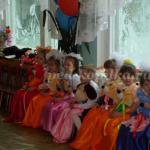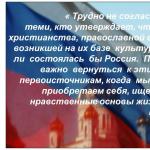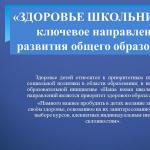Head of the Ministry of Emergency Situations for the South. Ministry of Emergency Situations on the playground! The results of inspections of the activities of legal entities, individual entrepreneurs and citizens on compliance with the requirements
Don't burn grass in spring!!!
Why you can’t burn grass in the spring and what it leads to:
1. Forest and peat fires
Forest fire is a terrible disaster for any region of the country. In addition to the loss of the cost of the wood itself, the cost of extinguishing fires, this includes losses from a decrease in the amount of oxygen, phytoncides emitted by the forest, deterioration in the quality, condition of forests, unsuitability for their use for recreational purposes, etc. Forest fires destroy animals and birds living in forests , reduce the growth of forest stands, increase windiness and weaken forests, and then drying stands become centers of pests and diseases of the forest. Forest fires cause huge economic and environmental losses.
2. Ecosystem destruction
1) In the wild, everything is provided so that grass and shrubs grow after the winter on their own, without burning. In our climate, the grass rots during the winter and is not an obstacle for young growth, and over time, the branches also rot. In addition, branches in the grass are a great place for nesting birds.
2) The effect of faster grass growth as a result of burning is only apparent. Dry grass simply hides young green shoots at first, and unburned areas appear gray. While on blackened scorched areas, green grass is clearly visible.
3)
During the fires, grass and flowers already begin to grow. Shrubs begin their active growing season - i.e. grow, although it is not visible to the naked eye. Thus, spring fires harm grass and shrubs. After the fires, it survives and is the first to grow, drowning out the weakened and almost ruined other flora, the coarsest, unpretentious grass
and weeds.
4) The seeds of plants and the grass itself die above the surface of the earth, and the seeds underground, on the ground. The seeds of each plant species must undergo a certain temperature regime in order to sprout. Even a slight deviation from the norm can affect their germination. During burning, they simply die. Only the rhizomes of plants that are deep in the soil survive. But not all plants are perennials. Many are annuals and propagate by seed.
5) As a result of burning dry grass, the species composition of meadow vegetation and wildlife is depleted. Wherever the fires have passed, there will no longer be the former herbs, weeds will seize the vacated territory.
6) Many insects, their larvae, pupae die. All living creatures burn in the fire - ladybugs, ground beetles, earthworms and others, exterminating various pests of the garden and garden, and participating in the process of soil formation. For earthworms, there is no extra dry grass. It is quickly and amicably processed by earthworms, turning it into the most valuable fertilizer, introducing it into the depths of the soil to the roots of plants, and at the same time making the soil loose and alive. Last year's dry grass is not garbage, but priceless food, a house, shelter, living conditions created by nature itself. In cities, in particular in Moscow, in the "stone jungle", the land is devoid of vegetation, it is bare and trampled down. Nature cannot survive like this - it has its own laws that should be respected.
7)
Burning dry grass causes the death of clutches and nesting sites of such birds as mallard, cracked teal, lapwing, herbalist, snipe, reed and common bunting, field, forest and crested larks, meadow pipit. The nesting period of these birds begins in early April. Birds leave the burnt places, which means they also leave us. Animals and birds are very afraid
fire.
8) When grass is set on fire, all useful soil microflora dies, including the one that helps plants resist diseases. Recovery takes time, just the most valuable spring time, when the plants are gaining strength.
9) Grass fires lead to a noticeable decrease in soil fertility. Grass fire does not increase the amount of mineral nutrients in the soil - it only releases them from dry grass, making them available for plant nutrition. In this case, nitrogen compounds are lost (the main part of the bound nitrogen stored in vegetation is released into the atmosphere, becoming inaccessible to the vast majority of plants), and dead organic matter of the soil (formed from dying parts of plants, including dry grass itself). Reducing the amount of dead organic matter in the soil - main factor decrease in soil fertility. Organic matter - humus - provides porosity and looseness of the soil, its moisture capacity, the ability to retain the elements of mineral nutrition of plants in those forms from which they can be quickly released into the soil solution (which is especially important during the period of active grass growth). In addition, organic matter largely determines the soil's ability to withstand water and wind erosion - particles of sand and clay bonded with dead organic matter are more difficult to wash off with water or are blown away by the wind, which means that fertile layer soil is better preserved over time. Finally, dead organic matter releases the elements of mineral nutrition present in it gradually, as it decomposes - while when this substance is burned, the mineral elements pass into a soluble form (in ash) quickly and are subsequently easily washed out by the very first heavy rain. Many fertile soils, for example, chernozems, in conditions of constant burning of dry grass simply could not form - since there would be no constant replenishment of the soil with dead organic matter necessary for their formation.
10) Even animals, reptiles, amphibians can die and suffer in a fire: especially newborn hares, hedgehogs and hedgehogs, toads, frogs. In a strong grass fire, almost all animals living in dry grass or on the soil surface die. Someone burns, someone suffocates in smoke. Burnt bird nests with traces of eggs, scorched snails, rodents, and small mammals are very often found in conflagrations.
11) When one or many links from the entire biocenosis of a place die, the ecological situation can irreversibly change for the worse. Every animal, every bug, butterfly, frog, every grass and every flower - constitute a single whole in nature, in the biological chain. An overabundance or lack of individuals in such a link is sometimes seen firsthand. In reserves, due to artificial conditions and restrictions, animals are often not only bred, but also shot, or livestock are taken to other reserves. This is what happens with wolves. Too many wolves - and they will not have enough food, the whole ecosystem will be shaken, disaster will come. And too few wolves will also lead to disaster. Every blade of grass is also important. According to scientists, about 90% of the floristic and faunal diversity of meadow ecosystems is contained or associated with a 10 cm layer of the topsoil. Often an invisible variety, but a very important link in ecosystems.
12. Trees can be damaged during spring fire, especially their root neck - a very vulnerable spot right above the ground. Not to mention the fact that trees can simply burn out, the buds that swell in spring can burn out from a strong temperature, which is very harmful to the tree, even if it survives. Young trees suffer (especially such vulnerable species as oak, maple, linden). Grass fires cause significant damage to forest edges, destroy young tree growth, and serve as one of the main sources of fires in forests and peat bogs. Even a weak and fleeting grass fire can lead to the death of young forest plantations created to protect fields from drying out, banks from erosion, roads from snow and dust drifts, etc. Young tree shoots that appear naturally on waste agricultural lands also die most often precisely because of the burning of dry grass.
13) The smoke from burning grass is acrid, dark, thick - it is very unpleasant for people, eats eyes, smells unpleasant. Allergy sufferers can't stand it. And when you burn grass in the city, you also burn those salts of heavy metals that have settled on leaves, grass and are pumped out of the soil by plants - such smoke is simply poisonous. In addition, in the deposits of dry grass and deadwood, garbage often lurks, including garbage that is not suitable, dangerous for burning - plastic bottles, etc. In areas contaminated with radionuclides, radioactive substances enter the air with fire and smoke, which are transported by wind over considerable distances. In rural areas, the remains of fertilizers and pesticides are burned in a fire, forming volatile toxic organic and inorganic compounds. When grass is burned along roads, air pollution with heavy metals occurs.
14)
Grass fires are one of the most important sources of carbon dioxide emissions associated with economic activity person. Under natural conditions, when dry grass does not burn at all or burns extremely rarely, as a result of lightning strikes during dry thunderstorms, the organic matter of dying plants or their parts accumulates on the soil surface. There it goes through a complex cycle of transformations, partial decomposition, mixing with the upper layers of the mineral soil (due to the activity of numerous soil animals), and gradually transforms into long-term stable organic soil compounds - of course, with some loss of total mass. For millennia, the soil continues to accumulate this organic matter, excluding it from the atmospheric cycle (rare grass fires that occur in nature and without human intervention do not radically disrupt this process). If fires become too frequent, then in
carbon dioxide is released into the atmosphere - not only due to the combustion of fresh dry grass, but also due to the partial burnout of dead organic matter historically accumulated in the soil. This means that the so-called "greenhouse effect" is aggravated, leading to adverse changes and sharper fluctuations in the climate of our planet.
17) At the place of arson, the normal life of plants and insects is restored only after 5-6 years, and often never recovers.
Unified emergency telephone number "01" or "101"
Press Service of the Office for the Southern Administrative District
Main Directorate of the Ministry of Emergency Situations of Russia for Moscow
Most children after a long day at kindergarten walked with their parents on the playground, hurried to the store or to their homes. And then, unexpectedly, the personnel of the 24th PSCH FPS of the Office for the South Administrative District of the Main Directorate of the Ministry of Emergency Situations of Russia for Moscow came to visit the children of the Nagorny district, the children were glad of such an unexpected and unusual visit, seeing from a distance a huge fire truck, they rushed to meet the firefighters. The adults, on the contrary, looked at the approaching car with apprehension and each one scrolled in his head, and whether I turned off all the electrical appliances when leaving the house, and whether my elderly parents or the child left at home for “five minutes” are all right!
Fortunately, everything was in order for everyone, and the personnel in the fire truck, and employees of the 3rd Regional Department for Supervisory Activities and Preventive Work of the Directorate for the South Administrative District of the Main Directorate of the Ministry of Emergency Situations of Russia for Moscow hurried to the children and their parents in order to spend time with them a conversation aimed at preventing the death and injury of children in a fire and how to avoid it!
Oleg Alipov, Deputy Head of the 3rd RONPR of the Directorate for the Southern Administrative District of the Main Directorate of the Ministry of Emergency Situations of Russia for Moscow, told residents about the danger of faulty electrical equipment, recalled safety measures when using electrical equipment, and warned of the danger of leaving young children unattended alone with electrical appliances turned on. Also, knowing that there are gasified houses in the area, Oleg Aleksandrovich said that in case of violation of safety regulations during the operation of gas stoves and other appliances, gas is a source of danger. Only compliance with safety rules when operating gas appliances will save the life of yourself and your loved ones.
Engineer of the 3rd RONPR of the Office for the Southern Administrative District of the Main Directorate of the Ministry of Emergency Situations of Russia for Moscow Maria Shaverina turned to parents - From an early age, instill in children the obligation to follow the rules fire safety, as often as possible, talk with the kids about how to behave in emergency situations, explain to children the possible consequences and dangers of playing with fire and other flammable objects, do not set a bad example for children: do not smoke in front of them, do not light paper to illuminate dark rooms. Keep lighters and matches out of the reach of children. And then, in an accessible and entertaining way, Maria Yuryevna explained to the children how to behave in extreme situations, spoke about the common causes of fires. Particular attention was paid to the mistakes in the actions of children in case of fire. Most of the kids were sure that they could hide from the fire. And at the end of the conversation, she reminded the children how to correctly type in mobile phones emergency numbers "101", "112" and what you need to tell the dispatcher first. Asked me to learn my address and name!
No less interesting was the story of Dmitry Abrosimov, deputy head of the 24th PSCh, about the need for proper parking of personal vehicles in narrow yards and about how important it is to give way to fire trucks that rush to the scene with their lights and sound alarms turned on. The life and health of people, as well as the safety of property, directly depend on how quickly they arrive at the scene of a fire.
Further, firefighters Alexander Tatarinkov, German Orlov and Alexander Stremov showed the equipment of the fire engine, fireman's suits, and gave helmets to try on. And what kid doesn't dream of driving a fire truck? The guys from the playground on the street. Yaltinskaya d. 10 bldg. 1 dream came true. They climbed inside the car with great enthusiasm and shared their impressions with each other. A powerful jet of water, beating from the barrel of high pressure, led all the guys into indescribable delight.
This meeting became informative and memorable for the children, aroused interest and respect for the profession of a fireman.
At parting, all the children were presented with memorable gifts - badges and bookmarks for books, the guys did not want to let such interesting guests go for a long time!
Press Service of the Office for the Southern Administrative District
Main Directorate of the Ministry of Emergency Situations of Russia for Moscow
Main Directorate of the Ministry of Emergency Situations of Russia for the city of Moscow
ANALYSIS OF ACTIVITIES
3 RONPR of the Directorate for the South Administrative District of the Main Directorate of the Ministry of Emergency Situations of Russia for the city of Moscow
for the 1st half of 2016
FIRE STATISTICS
The situation with fires in the territory serviced by 3 RONPR of the Office for the South Administrative District of the Main Directorate of the Ministry of Emergency Situations of Russia for Moscow for the 1st half of 2016, compared to the same period last year (hereinafter referred to as APPG), was characterized by the following main indicators:
89 fires were registered (APPG - 92 fires);
4 people died in fires (APPG - 8 people);
10 people were injured (APPG - 15 people);
Rescued 13 people (APPG - 22 people);
Also, 130 incidents related to fires were registered as fires (APPG - 20 fires).
Basic data on fires and their consequences

On average, on the territory of 3 RONPR of the Office for the South Administrative District of the Main Directorate of the EMERCOM of Russia for the city of Moscow, operational units made 6 trips daily.
Distribution of fires and fires by district administrations

Distribution of fires by time of day

Distribution of fires by day of the week

In the distribution by day of the week, as before, the largest number of fires was noted on Thursday, Saturday and Sunday.
Distribution of fires by months

According to the form of ownership, the largest number of fires was registered, 33 fires at facilities and at facilities private property 33 fires.
Distribution of fires by objects of occurrence

The largest number of fires registered in the serviced area of the 3rd RONPR of the Office for the South Administrative District of the Main Directorate of the Ministry of Emergency Situations of Russia for the city of Moscow falls on residential buildings and outbuildings, which is 40 registered fires.
Distribution of fires by causes

Death and injury in fires
The number of people injured in fires compared to the same period last year decreased from 15 to 10 people.
Distribution of people killed in fires

Distribution of the number of deaths in fires by district administrations

Distribution of people killed in fires by months of the year

Distribution of the number of people injured in fires by months of the year

Distribution of injured people by objects of fire occurrence

The largest number of injured people was registered during fires in residential buildings 4. For the same period last year - 3.
Distribution of the number of injured by district administrations

As can be seen from the diagram, an increase in the number of people injured in fires occurred in the Nagorny district.
Causes of fires with injury to people

Brief information about fires and their consequences by objects of occurrence
residential sector
In the 1st half of 2016 in the residential sector located on the territory serviced by the department:
89 fires were registered (APPG - 92 fires);
4 people died in fires (APPG - 8 people);
10 people were injured (APPG - 15 people);
13 people were rescued (APPG - 22 people);
The established material damage amounted to 5596099 rubles. (APPG 8843644 rubles);
Also, 130 incidents related to fires were registered as fires (APPG - 200 fires).
Basic data on fires and their consequences in buildings of the residential sector

Distribution of fires in buildings of the residential sector by district administrations
(in absolute terms)

Distribution of fires by places of their occurrence in residential buildings 
Most often, fires occurred in stairwells (entrance doors to apartments) - 11 cases and in rooms - 10 cases.
The main cause of fires in the residential sector is careless handling of fire - 18 fires, of which - 15 fires, occurred due to carelessness when smoking.
Distribution of fires in the residential sector by causes of occurrence

As in previous years, to a large extent, there is a diversion of forces and means of units fire brigade to extinguish fires belonging to the category - sunbathing. During 2016, according to these calls, fire departments made 130 trips.
The largest number of trips to extinguish garbage as a percentage of the total number of trips fire departments made in the district administrations of Chertanovo Central and Chertanovo South.
Distribution of the number of trips to extinguish garbage by district administrations

Vehicles
For the 1st half of 2016, 23 fires were registered on vehicles in the territory of the 3rd RONPR of the Office for the South Administrative District of the Main Directorate of the EMERCOM of Russia for Moscow. In 2015, 21 fires were registered on vehicles.
Most of the fires are in cars.
Distribution of fires by vehicle types

In 2016, 1174 reports of crimes related to fires, as well as other messages, were received by the 3rd RONPR of the Department for the South Administrative District, 1494 messages for the same period last year. 77 messages were re-registered in the book of registration of messages about crimes, for the same period last year 72 messages. According to the results of inspections, 26 decisions were made to refuse to initiate criminal proceedings, for the same period last year 30 decisions. 48 materials of checks on the facts of fires were transferred to the territorial police departments, for the same period last year 30 materials.
RESULTS OF COMPLIANCE INSPECTIONS OF LEGAL ENTITIES, INDIVIDUAL ENTREPRENEURS AND CITIZENS
For 2 quarters of 2016, state fire inspectors carried out 232 inspections at supervised facilities, including 24 inspections of residential buildings (of which 18 were high-rise buildings).
Distribution of the number of inspections carried out compared to the same period last year

Number of scheduled inspections carried out

66 inspections were carried out (APPG - 123).
According to the results of inspections, 75 prescriptions were handed over (APPG - 128).
The number of information about the fire situation sent to the authorities and the prosecutor's office compared to the same period last year

Objects of the residential sector
The department checked 24 residential buildings. According to the results of inspections, 24 individuals. To eliminate the identified violations, 13 prescriptions were handed. 401 information letters were sent to interested organizations on issues of ensuring fire safety in the residential sector, of which: 174 - to the authorities, 2 - to the prosecutor's office and 225 - to other authorities.
Objects of education
The department carried out 26 inspections of educational institutions, as a result of which 20 orders were issued, 60 fire prevention measures were proposed for implementation. For violations of fire safety requirements, 2 legal entities and 41 officials were brought to administrative responsibility.
Administrative and legal activity
For the 1st half of 2016 officials 3 RONPR of the Office for the South Administrative District of the Main Directorate of the Ministry of Emergency Situations of Russia for the city of Moscow, 297 administrative protocols were drawn up, for the same period in 2015 477 administrative protocols were drawn up.
Of these, for violation of fire safety requirements, in accordance with the KRFoAP, under Art. 20.4 initiated - 218 administrative cases, in 2015 - 374 administrative cases. For failure to comply with a legal order, in accordance with Art. 19.5 KRFoAP - sent to the judicial authorities 56 administrative cases, in 2015 - 90 administrative cases, for the implementation without state registration or without a special permit (license) in accordance with Art. 14.1 KRFoAP drawn up - 7 protocols on administrative offenses, in 2015 - 8, for evading the execution of an administrative penalty on the basis of Part 1 of Art. 20.25 KRFoAP initiated and sent to the judicial authorities 9 administrative cases, in 2015 - 3. In the manner prescribed by Part 5 of Art. 32.2 of the KRFoAP for compulsory imposed penalties, 13 resolutions were sent to the departments of the bailiff service of the Federal Bailiff Service of Russia, in 2015 - 4.
In the field and protection of the population and territories from natural and man-made emergencies, 10 administrative cases were sent to the world courts, in 2015 - 16.
Distribution of the number of cases on administrative offenses by subjects administrative offense

In 2015, the prosecutor's office of Moscow initiated 65 administrative cases - 75. Based on the results of consideration of the materials of administrative cases, officials of the 3rd RONPR of the Directorate for the South Administrative District of the Main Directorate of the EMERCOM of Russia for Moscow issued decisions on bringing to administrative responsibility.
In general, officials of the 3rd RONPR of the Department for the South Administrative District of the Main Directorate of the Ministry of Emergency Situations of Russia for the city of Moscow, in total, 348 cases of administrative offenses were initiated against physical and legal entities in 2015 - 506.
For the 1st half of 2016, on the administrative cases initiated by the officials of the department, as well as the judicial authorities, 294 decisions on the imposition of administrative penalties were issued, in 2015 - 453, of which in the form of:
- - 274 (APPG - 428);
Warnings - 19 (APPG - 22).
The total amount of administrative penalties in the form of an administrative fine amounted to 6,138,500 rubles (APPG - 7,641,900 rubles), of which 2,234,500 rubles (36%) were collected to the state revenue (APPG - 3,153,000).
In accordance with Art. 29.13 KRFoAP, 9 submissions were sent to the facility managers to eliminate the causes and conditions that contributed to the commission of an administrative offense, of which 9 were executed.
ORGANIZATION AND CARRYING OUT WORK ON FIRE PROMOTION. Interaction with
For the 1st half of 2016, employees of the 3rd regional department and preventive work of the Directorate for the South Administrative District of the Main Directorate of the EMERCOM of Russia for Moscow carried out work on interaction with the media. In order to quickly inform Muscovites of the state of ensuring fire safety, the employees of the department organized work with the press on boarding portals, in social networks, websites of the prefecture and district governments. Press releases about major fires were regularly prepared with subsequent transmission to the editorial offices of district, city newspapers and television.
For the 1st half of 2016, the leadership of the 3rd RONPR of the Office for the South Administrative District of the Main Directorate of the EMERCOM of Russia for Moscow spoke 4 times on TV channels in Moscow. There were three performances at the radio station "Moscow speaking".
In their speeches on television, the leaders covered fire prevention issues, explaining fire safety measures to the population and the rules of conduct in emergency situations.
For the 1st half of 2016, work was carried out on interaction with the editorial offices of the district and electronic newspapers. The pages of the intermunicipal press published 13 materials on the state of fire safety on the territory of district administrations, historical materials on fire protection, the publication of a single "helpline" and telephone numbers of mobile operators when dialing to the "01" service, questions of the creation and development of voluntary fire protection, and also the rules of conduct on and in forest park areas in winter and summer.
The department carried out work on posting materials on official pages on social networks such as facebook, vkontakte, classmates, twitter. For the first half of 2016, 930 materials were posted. The site of the Prefecture of the Southern Administrative District and the sites of district administrations posted 1663 materials and 76 materials on Internet portals.
The main problems noted by the press were: compliance with fire safety rules during events and holidays; violations of fire safety rules, leading to fires, death of people and large material losses; the occurrence of fire due to non-compliance with the rules of operation in residential and office buildings, violation of the rules for the operation of electrical installations of vehicles.
Posters on compliance with fire safety measures were placed in the residential sector, buildings of preschool and school educational institutions, health care institutions, district administrations, and municipalities. On the territory of the department near the metro station "Prazhskaya" there is a point of street information and warning of the population (PUON).
The department conducted 107 classes on fire fighting topics among students of schools and kindergartens and organized 23 visits to fire stations by children. 37 schools visited the exhibition exposition of the GU TsUKS EMERCOM of Russia in Moscow.
During the reporting period of the current year, 37 meetings were held with the population with the participation of district police inspectors and representatives of district administrations. Employees of the department participated in the organization of work on training employees of enterprises, organizations and institutions in fire safety measures. 522 people from 33 organizations were trained under the programs of fire-prevention briefing and fire-technical minimum.
Head of 3 RONPR
Office for South Administrative District
Main Directorate of the Ministry of Emergency Situations of Russia for Moscow





